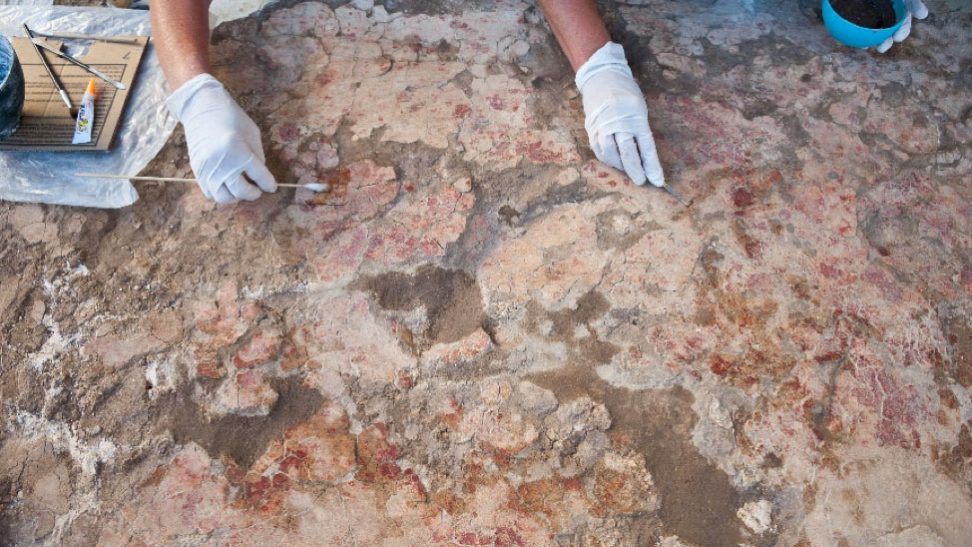
Landscape, Memory and Social Complexity in the Great Megaliths of Iberia: The Dolmen of Menga and the Tholos of Montelirio
Megalithism was one of the phenomena most closely associated with the expansion of the Neolithic way of life: Megalithic monuments ordered social life and the perception that human beings had of their own existence. Within the wealth of expressions that this phenomenon had in the Iberian Peninsula during all the recent prehistory, the dolmen of Menga and the tholos of Montelirio stand out as two extraordinary monuments due to their intrinsic characteristics, and for having been the object of recent multidisciplinary investigations. The Menga dolmen, declared a National Monument in 1886, which makes it the earliest heritage reference in Spanish Prehistory, and later declared a World Heritage Site by UNESCO in 2016, is a unique construction both for its genesis, its design (which includes the largest stones ever used as part of Iberian megalithism) and its landscape dimension, as well as for its extensive biography, which shows how much it was a reference point for social life at the local and regional level for thousands of years. For its part, the tholos of Montelirio has become a reference for the study of societies in the III BCE millennium in the Iberian Peninsula. Due to its constructive scale, architectural style, extraordinary human and material register and the exceptional artistic program it gave framework to, Montelirio already constitutes a “classic” monument of the Spanish and European Prehistory, which has provided a series of privileged evidences for the understanding of the social life and the cosmovision among the Chalcolithic communities.

Period
Late Neolithic and Copper Age (c. 4200 and 2200 BCE) Both monuments present strong evidence of reuse during the Recent Prehistory, Protohistory, Antiquity and the Middle Ages.
Institution
Department of Prehistory and Archaeology, Universidad de Sevilla (Spain)
Web and social networks
Principal Investigator(s)
Dr. Leonardo García Sanjuán
Dr. Leonardo García Sanjuán, Professor of Prehistory. Department of Prehistory and Archaeology, Universidad de Sevilla (Spain)
Location
Málaga y Sevilla.
LOCATION
RESULTS
Considerable increase in scientific knowledge, academic recognition, heritage reputation and social and cultural prominence of Menga and Montelirio both nationally and internationally. Increase in the presence of both sites in the debates and in the syntheses of recent European prehistory.
- Dolmens of Antequera, World Heritage Site by UNESCO in July 2016.
- The creation of a strong current of citizen and civil awareness and public interest in the tholos of Montelirio in the whole city of Seville. and especially in the municipality of Castilleja de Guzmán where the monument is located.
- Menga, traditionally described as a “tomb” in most of the literature, we have shown that the nature of the monument goes far beyond the merely funerary, and that in fact the funerary dimension was probably secondary in its original conception, being better described as a “temple” dedicated to the most important concepts within the Neolithic cosmovision; the forces of nature, such as the sun, the earth and the water. Likewise, we have successfully demonstrated that the biographical approach and the multi-disciplinary approach to research are key to understanding monuments of great complexity and antiquity.
- In the case of the Valencina-Castilleja Archaeological Zone, our research in the tholos of Montelirio and the PP4-Montelirio sector has allowed us to propose new interpretations of this mega-site, which currently occupies a leading role in the debate on the emergence of complex societies in recent European prehistory.
PICTURES
- Archaeologists Discover Port Structures from Ancient Greek City of Asine (Ancient origins 11/03/2025) - 12 March, 2025
- LiDAR study reveals 5,000-year-old fortified settlements (Heritage daily 11/03/2025) - 12 March, 2025
- Unlocking the Secrets of Jersey’s Le Câtillon II: A Celtic Settlement Discovered Near the Enigmatic Hoard (Arkeonews 12/03/2025) - 12 March, 2025

























